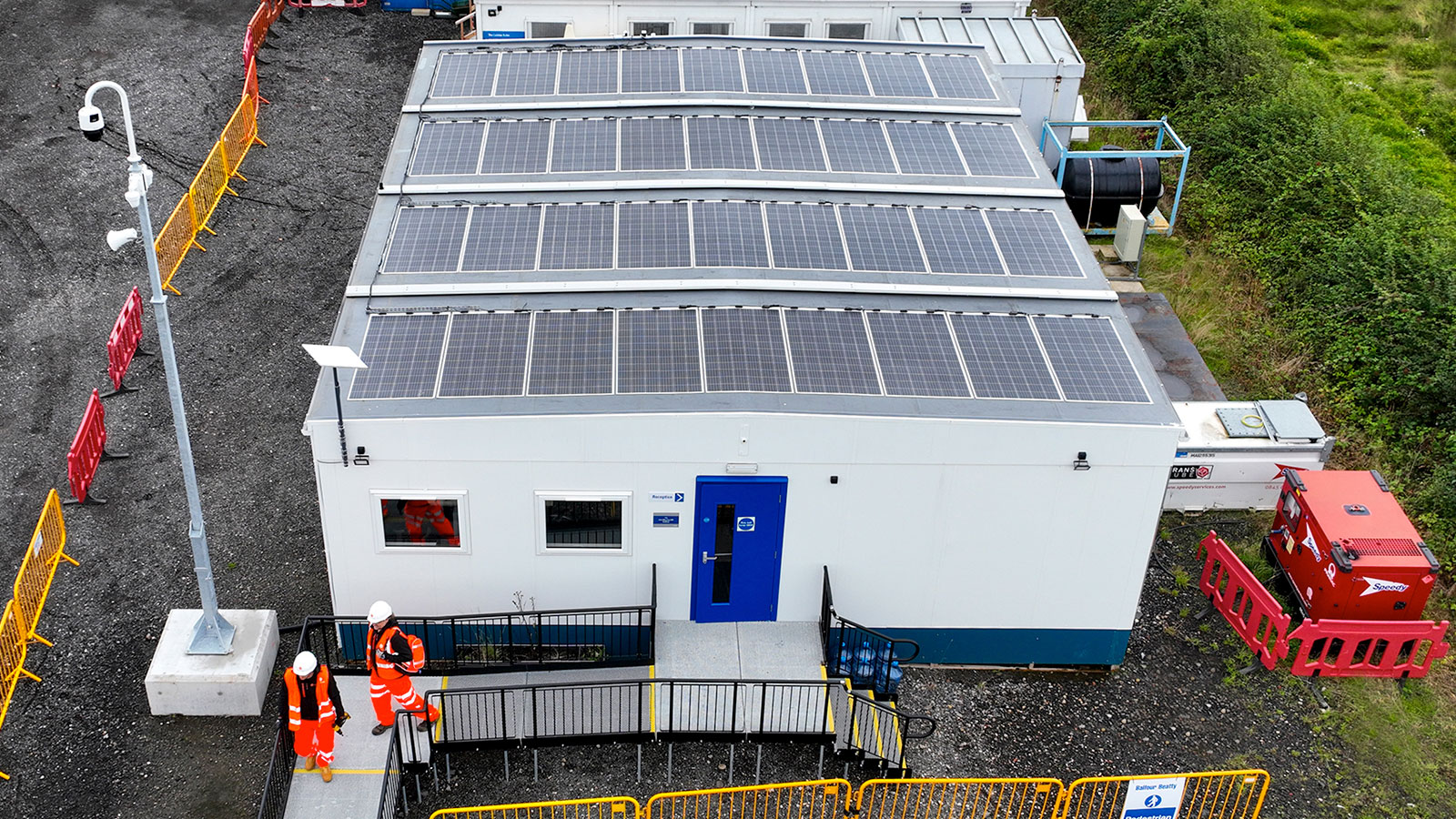Drawing on the recent experience of supporting one of the world’s biggest infrastructure firms, Ciaran Cotter, Technical Director at Solivus, explores the ever-mounting case for transitioning away from diesel gensets and towards sustainable on-site power.
It’s official; the days of the diesel generator are numbered. In June 2023, the Construction Leadership Council set out designs to eliminate diesel from most construction sites by 2035. This follows the 2022 withdrawal of red diesel in construction plants and machinery. Add to the equation record high diesel prices and it’s easy to see why the sector remains primed for a green alternative to the traditional gen-set. But what is it?
It’s easy to see why construction is on the front line of the climate crisis. Around 40% of UK carbon emissions are linked to the built environment. Yet infrastructure demand is vast. Therefore, without the right sustainability policies and strategies in place the sector could undermine the path to net zero.
One great example of the type of progressive climate action needed can be found in the transition towards zero diesel construction sites.
Traditionally, construction sites have relied on diesel generators to power onsite equipment and machinery thanks to their associated high performance, reliability and portability.
However, while diesel generators provide reliable temporary power, they do have some serious drawbacks, especially for the environment.
Thus, as construction firms continue to ramp up the scope and scale of their sustainability commitments, it was inevitable that the environmental implications of diesel generators would come under greater scrutiny.
This was seen last year as the Construction Leadership Council launched its ‘Zero Diesel Sites Route Map’, a key element of its CO2nstruct Zero programme, which sets out to eliminate diesel from 98% of construction sites by 2035. Importantly, the Route Map advocates increased on-site renewable energy, with up to 500 construction companies signing up to significant zero diesel reduction strategies by this year. It follows the 2022 removal of the red diesel rebate from construction.
At the same time, diesel prices remain highly volatile – having shot up at one of the fastest rates in more than 20 years last September – meaning the transition from diesel to renewable energy is no longer just a green imperative but a financial one.
Clearly then, the argument for accelerating the transition to diesel-free construction sites appears conclusive. But the big question is – what’s the best alternative?
Transitioning to renewables
Although not new, the use of solar panels in temporary construction is quickly coming to the fore as a way for sites to obtain a reliable temporary power supply and decarbonise, and for good reason.
Fundamentally, cost reduction has made it a viable option for both long-term and short-term construction projects, with it estimated that the cost of installing solar has dropped more than 80% since 2010.
But it isn’t just about cost but technological advances too. Traditionally, solar was once confined to robust permanent structures able to withstand the weight of rigid roof-mounted solar panels and therefore not suitable for cabins. Not anymore.
Thanks to advances in technology, the latest generation of innovative lightweight solar panels are a fraction of the weight of conventional panels and have more universal applications for fixing methods which have opened up new roof space opportunities.
A great example of this opportunity can be found in Solivus’ recent work with one of the world’s biggest infrastructure names. Hereby, the challenge was to create a solar-fuelled alternative to the diesel generators currently used to power its construction site cabins portfolio.
To achieve this, Solivus created a low carbon set up which combines solar panels with a battery storage system to create a decentralised, self-sufficient energy hub. The system works by storing the excess energy generated by the solar panels in a connected battery storage unit. As a result, site cabins can be powered continuously, with the system automatically releasing the reserve energy even when there is no sunlight.
Indicative of this approach’s vast potential, the project, based on a seven-day operational period, is estimated to save the business up to 14,416 Kg of carbon dioxide emissions across the site’s cabin portfolio per year. It will also eliminate the need for 5223 litres of diesel.
Cost savings are accounted for too, with the average cost of solar generation at £0.61/kWh compared to the diesel equivalent of £1.44/kWh. The result is a gross annual saving of £9,140, with the entire system paying for itself in just six years, all while ensuring a reliable, resilient, clean energy supply.
There is no doubt that it’s now or never for net zero. While this brings new complexity for construction operators, it also provides an opportunity to reimagine environmental strategy and take advantage of innovation. With benefits that include significant energy cost savings, emissions reductions and ‘always on’ reliability, the transition from diesel to solar in temporary construction is an inevitable and intelligent one.


